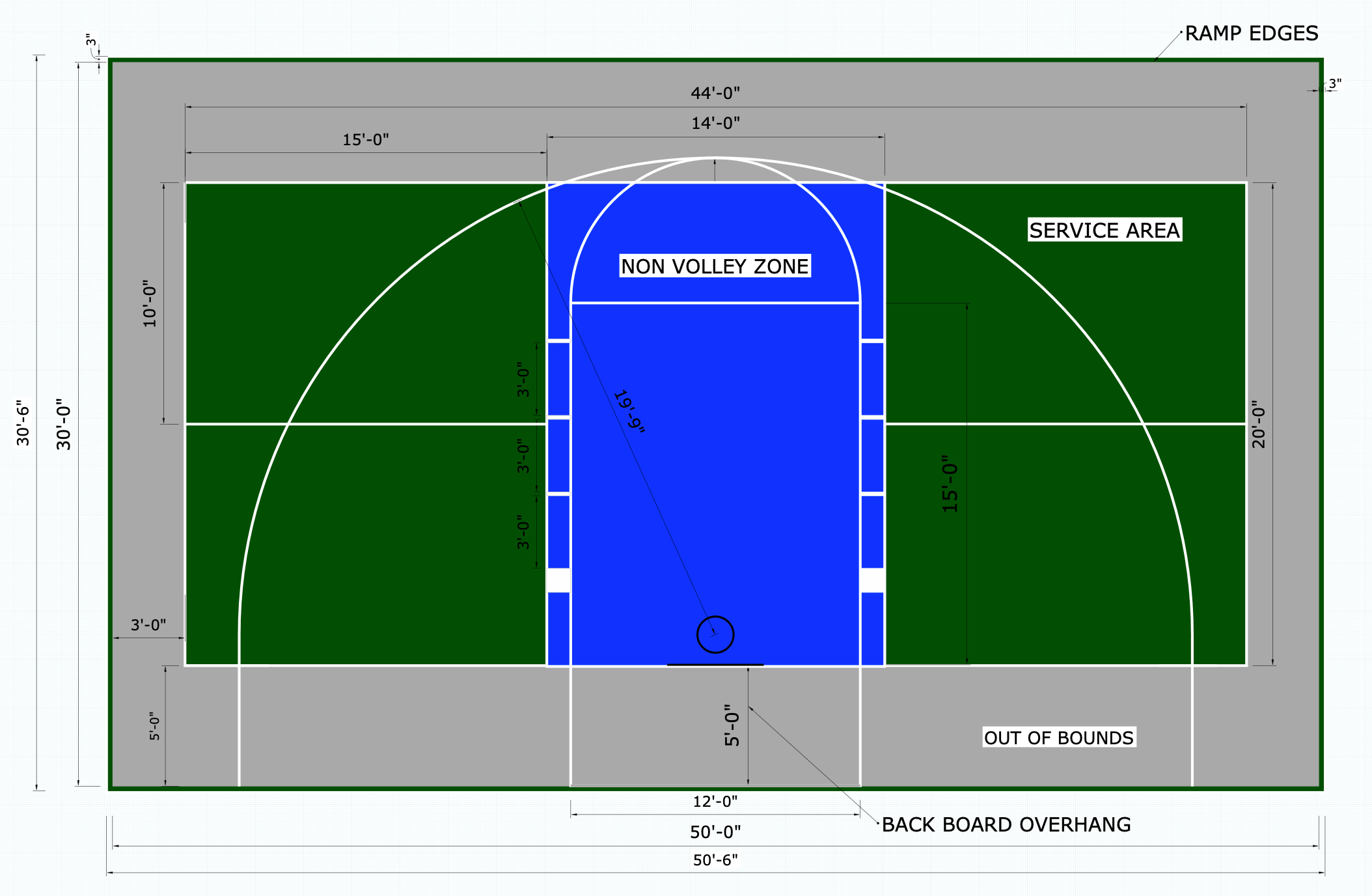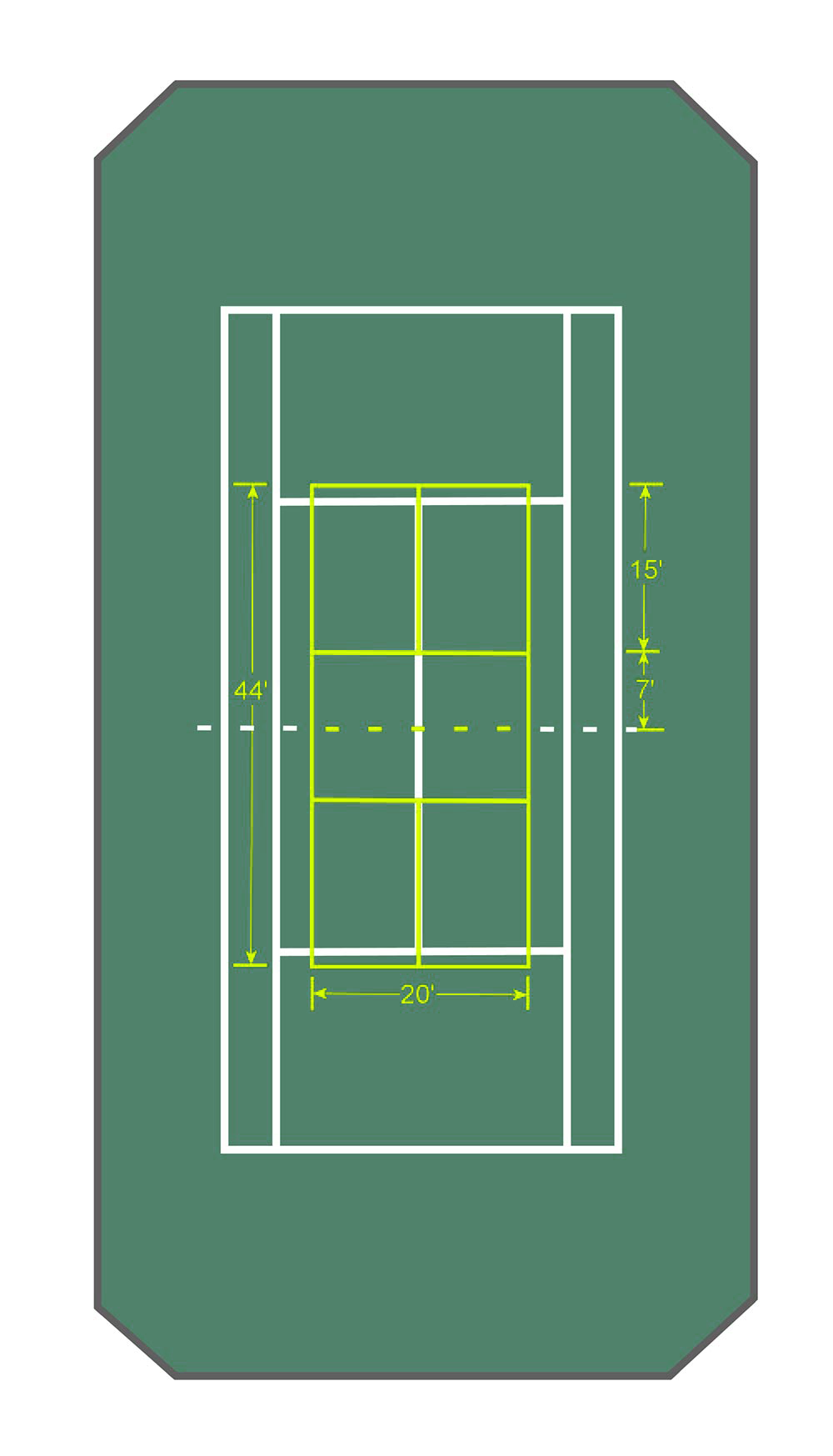What to Get Out Of Pickleball Courts Layout & Building And Construction in Illinois and Midwest
What to Get Out Of Pickleball Courts Layout & Building And Construction in Illinois and Midwest
Blog Article
Key Variables in the Building of Pickleball Courts: From Site Selection to Last Coatings
The building of pickleball courts incorporates a range of essential factors, starting with the option of an ideal website that stabilizes ease of access with ecological factors to consider. Crucial elements such as court dimensions, surface area products, and drainage systems substantially impact not just the quality of play yet likewise the long life of the facility.
Website Option Standards
When beginning on the construction of pickleball courts, it is necessary to pin down the site option standards that will make sure optimal playability and availability. The area must be conveniently reachable for players, ideally located near suburbs or neighborhood centers, to encourage involvement.
In addition, the terrain ought to be degree and secure, as uneven ground can cause safety risks and impact gameplay. Ample water drainage is likewise crucial; picking a website with good water overflow will certainly assist preserve court problems during unfavorable weather condition.
Another important consideration is the accessibility of energies. Accessibility to electrical energy and water is required for illumination and upkeep purposes. In addition, proximity to car parking centers is crucial, facilitating simple access for gamers and spectators alike.
Environmental factors can not be overlooked; all-natural color from trees can improve gamer convenience, while direct exposure to dominating winds might disrupt play. Zoning regulations and area assistance must be considered to ensure that the task aligns with regional standards and receives the backing it requires for effective application. By very carefully assessing these standards, stakeholders can develop a welcoming and functional atmosphere for pickleball fanatics.
Court Capacities and Format
To make sure optimum gameplay and adherence to guidelines, the measurements and layout of pickleball courts should be meticulously defined. A typical pickleball court determines 20 feet in width and 44 feet in size for both singles and increases play.
The net height is evaluated 36 inches at the sidelines and 34 inches at the facility, creating a small dip that influences sphere trajectory. Court markings are equally vital; lines ought to be 2 inches broad and distinctive in shade to guarantee visibility.
Furthermore, a buffer zone surrounding the court is recommended, commonly extending 5 to 10 feet beyond the sidelines and baselines to accommodate gamers' activities and improve safety. Proper design and measurements not only make sure compliance with main regulations but also boost the total playing experience, suiting both leisure and competitive play. Careful planning in these locations is paramount to the successful building and construction of pickleball courts.
Surface Area Product Options
Picking the appropriate surface area product for pickleball courts is vital for ensuring ideal gamer efficiency and security. The choice of surface can substantially influence gameplay, consisting of ball bounce, traction, and player comfort.
There are several choices readily available, each with its distinctive qualities. Asphalt is a prominent selection as a result of its toughness and reduced upkeep requirements. It gives a solid having fun surface area that can stand up to different weather yet might call for regular resurfacing.
Concrete is one more commonly used material, using exceptional durability and a smooth surface. It permits regular ball bounce but can be tough on gamers' joints, making it less desirable for lasting play without appropriate padding.
For those looking for improved convenience and shock absorption, supported acrylic surface areas offer a sensible alternative. These surfaces integrate a base layer with an acrylic topcoat, offering improved grip and a softer feel, which is useful for decreasing the risk of injuries.
Finally, artificial lawn is getting grip, particularly for multi-purpose facilities. Its versatility and lower maintenance needs make it an attractive option, though it might not give the exact same sphere feedback as traditional tough click here for more info courts. Cautious consideration of these options will certainly make certain an optimal playing setting.
Water Drainage and Illumination Factors To Consider
Appropriate drainage and effective illumination are important elements in the building and construction of pickleball courts, significantly affecting both playability and safety. Sufficient drain systems avoid water build-up, which can lead to slippery surfaces and damage to the court structure.
Illumination is equally important, particularly for courts planned for night use. Proper illumination boosts exposure, making certain that gamers can see the ball plainly other and decreasing the danger of accidents. The positioning of lighting fixtures need to be tactically planned to get rid of shadows and supply even distribution of light across the court. LED lights are suggested for their power effectiveness and durability, providing bright illumination while lowering functional costs.

Last Surfaces and Maintenance
After addressing drainage and illumination considerations, attention transforms to the last surfaces and continuous maintenance of pickleball courts. Illinois and midwest. The selection of surface area material is essential, as it affects both playability and longevity. Typical choices include acrylic layers and specialized sports surfaces that supply optimal traction and padding. These finishes ought to be applied in numerous layers to ensure strength versus climate elements and wear.

Seasonal upkeep may include resurfacing every couple of years, depending on use and ecological factors. Appropriately maintaining webs, court lines, and bordering locations is equally essential to supply a secure and satisfying playing experience. Home Page By purchasing high quality coatings and sticking to an organized upkeep routine, center proprietors can guarantee their pickleball courts continue to be in excellent condition for years ahead.
Verdict
To conclude, the successful building of pickleball courts pivots on careful interest to several essential aspects. Site choice must prioritize ease of access and surface security, while court dimensions and layout should adhere to optimum standards for gameplay. The option of surface product substantially influences player safety and efficiency. Furthermore, reliable drainage and adequate illumination add to court durability and exposure. Ultimately, quality finishes and a robust maintenance routine are necessary for preserving the court's problem, improving the general experience for players and viewers alike.
Report this page